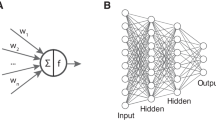Abstract
In this paper the fundamentals of Cellular Neural Networks (CNNs) are introduced. Subsequently it is shown that, due to their locally distributed way of exchanging signals, such structures can be used as powerful devices to simulate and to reproduce, in an analog fashion and low cost, complex behaviors, i.e. dynamics commonly encountered in living systems, such as autonomous wave formation and propagation as well as morphogenetical pattern development. In fact it is proven that both of these behaviours can be simulated with CNNs with the same cell structure, and the thoroughly different dynamics can arise only suitably modulating the CNN cell parameters. Therefore a unifying approach to pattern formation and active wave propagation phenomena is presented. The derivation of the complex phenomena is analytically addressed and several simulation results are also reported.
Similar content being viewed by others
Explore related subjects
Discover the latest articles, news and stories from top researchers in related subjects.Author information
Authors and Affiliations
Additional information
Received: 3 March 1997 / Accepted: 8 April 1997
Rights and permissions
About this article
Cite this article
Arena, P., Caponetto, R., Fortuna, L. et al. Cellular neural networks to explore complexity. Soft Computing 1, 120–136 (1997). https://doi.org/10.1007/s005000050013
Issue Date:
DOI: https://doi.org/10.1007/s005000050013




